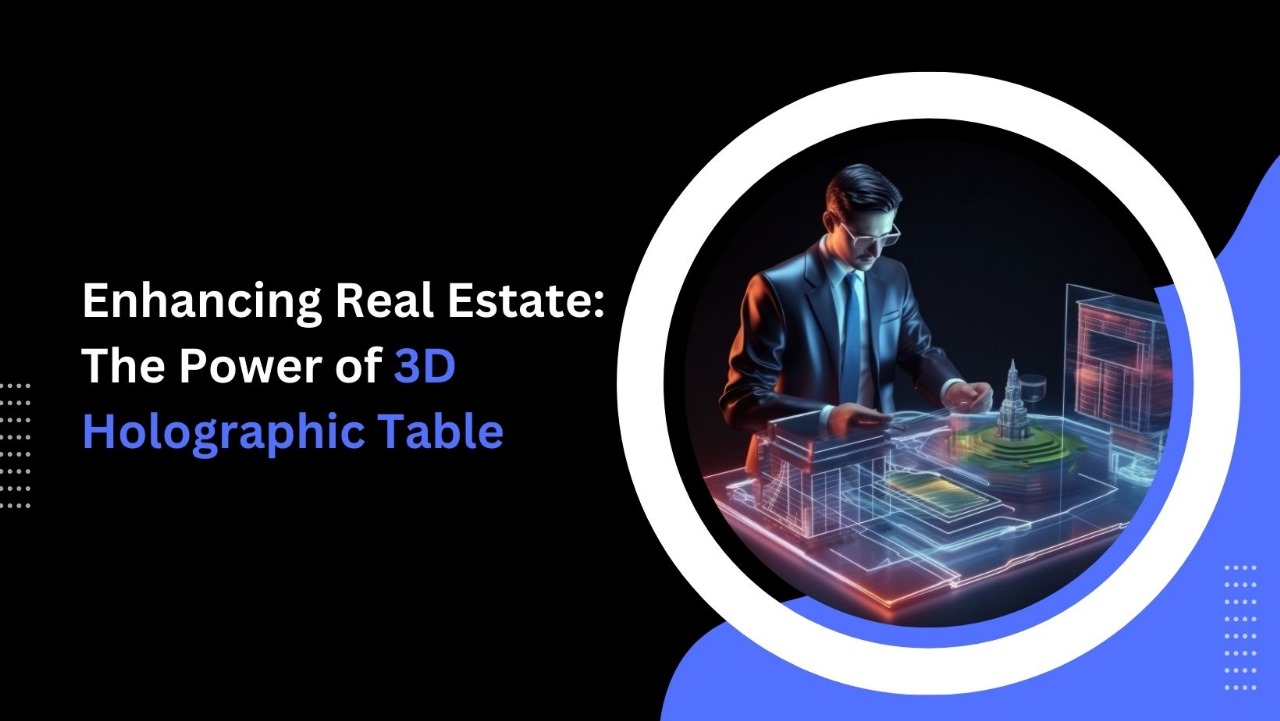As technology progresses which is evident in every aspect of life, industries are increasingly building 3D models to enhance the process of implementation as well as for customer relations. An outstanding innovation that can revolutionize the real estate industry in the context of the Internet is the appearance of a 3D holographic table. In this article, we will explain all the issues that make holographic tables to be attractive and effective reality solutions
What is the Power of Immersive Visualization?
Improving Property Presentations
The traditional way of displaying properties has relied on only immovable images or blueprints. It is observed that these methods might suit in the past, but do not satisfy someone who is purchasing anything at present. While the 3D holographic tables are more an immersive environment for the customers they can also provide a much more complex explanation of the properties.
For the consumer directly, the holographic 3D model means that she will be involved in the exploration of properties in a way previously unimaginable. They may move through virtual spaces, demo-done floor plans in 3D, and even do actual alterations to the arrangement with the help of building technology at the same time. This level of immersion in the real estate offer not only grabs the attention of a prospective client(s) but also enables a new level of intimacy with that property.
Facilitating Remote Engagement
The other benefit that is to be achieved via this way of building 3D model hologram tables is its capacity to enable distant joint work. In today’s world of globalization, real estate transactions always carry with them several groups and individuals who are scattered across the world. Traditional ways of collaboration, for instance, phone calls or conference video calls, can be assumed bulky and slow when compared to the speed and directness of face-to-face interactions.
With a 3D holographic table teams that are scattered geographically can gather in a virtual environment and work together in 3D environments for the preparation of property presentations, design modifications, and the final decision. Not only does it act on the efficiency of the decision-making process, but also improves the communication and team spirit among the parties involved.
Increasing Efficiency in Real-Estate Transactions With 3D Holographic Table
Streamlining Development and Design
Different time management skills are utilized in property development. The drawback of procrastination in the conceptualizing and permit stages is recognized to cause significant decelerations of the project costs and even bring about project timeline challenges. 3D models at their fingertips can save the day and let creators visualize and tune in their designs more easily.
Using computer models to represent buildings and developments in any architects’ and designers’ opinions would be helpful in the identification of problems which leads to time and cost savings. As a result, stakeholders can not only give feedback or make changes on the go but the process also gets speeded up by doing so and making it easier to stay on track during the project.
Facilitating Marketing and Sales
Looking different among the crowd is significant in the contesting world of real estate marketing and sales. Building a 3D model offers an exceptional selling point that can assist properties to captivate maximum attention and produce maximum leads.
Real estate executives can enhance the basics of the sale by providing possible buyers an interactive and attractive insight. Moreover, the capacity to present properties engagingly and dynamically can assist in dividing them from the competition and bring higher conversion rates.
Features of 3D Holographic Table
- Immersive Visualization – The holographic table provides an engaging insight permitting internet users to engage with virtual objects in 3D formats.
- Real-time Interaction – Internet users can modify holographic objects and data in real-time making it simple to analyze adjustments and changes.
- Remote Collaboration – It enhances association among teams located in various places allowing them to perform together in an imaginary atmosphere.
- Dynamic Presentation – It boosts property demonstrations by allowing possible buyers to research properties in an engaging and dynamic format.
Streamlined Design Process – They enable architects and designers to study and change designs without wastage of resources and time.
What is the Future of Real Estate In a 3D Holographic Table?
The opportunities for 3D models in real estate are unlimited with technological development. The possible applications are vast like virtual staging, interior design, virtual property travels, and interactive sales demonstrations. We can observe the extent of 3D holographic tables across the real estate industry with affordable techniques. The future of real estate is holographic for captivating design procedures and interactive property travels.
Conclusion
So, building a 3D model provides the most appropriate solution to modify the real estate sector. They boost property demonstrations, enhance rural engagement, and increase transaction efficiency by providing interactive visualization and smooth procedures. Holographic tables will play a crucial role in designing the future of real estate with the development of technology. For efficient holographic displays, we recommend Vision3D, one of the premier holographic display providers. Also, connect them at- +91-8971953451.
